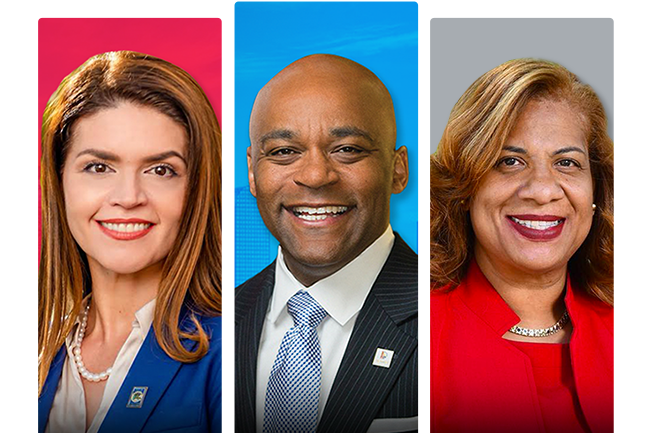
Female mayors still face a battle against sexism
30 March 2022
by Sarah Wray
It was famously said that Ginger Rogers did everything her dance partner Fred Astaire did but “backwards and in high heels”. It seems the metaphor still holds up for today’s female mayors, although they emphatically wear whatever shoes they like.
While things are slowly changing and several of the major US cities have female mayors, women remain significantly under-represented in local government leadership.
During a recent online roundtable organised by consultancy Ignite Cities, two female US mayors recounted how they still face bias and questions about their capabilities that are unlikely to be asked of a man.
Tucson’s Regina Romero was the first Latina councilmember and then the first Latina mayor in the Arizona city’s history.
“We have to work double hard,” Romero said, noting that as well as driving through their mayoral agendas and policies, women also have to “convince people that we are competent enough, intelligent enough, that we know what we’re talking about.”
“It’s two parallel tracks in terms of work that we have to do,” she commented.
Dancing on all stages
Romero said that as a councilmember in her early 30s, people would often direct questions to her male aide rather than her, until he began reminding them.
“I’m glad that there are a lot of allies in the community, including many male colleagues,” Romero said, but she believes even now that the media treat her differently than her white male predecessor.
Shawyn Patterson-Howard, who is the first female Mayor for the City of Mount Vernon, NY, has seen this too.
When there have been inevitable disagreements between her and other female leaders in the city, it was framed in the media as “bickering”, she said.
“We are professional women with degrees and advanced degrees and decades of executive leadership experience. We’re not bickering, we’re disagreeing and we’re coming to consensus,” Patterson-Howard said. “Many of the micro aggressions and just the terms that the local news media would use would be very interesting.”
As a black woman, Patterson-Howard is also confronted with assumptions that she is “angry”.
“I’m not an angry black woman,” she said. “But I am a black woman who gets angry sometimes. And I have a right to be.”
In previous roles, Patterson-Howard was the president and CEO of the Yonkers Family YMCA and planning commissioner for Mount Vernon. Like Romero, her competency, courage and credentials have been questioned, and she has received pushback against leading with compassion.
“Oftentimes as a woman you feel you have to become like the guys,” she commented. “I was like ‘no’. I enjoy my heels, I enjoy nice nails, I like my hair to be done. I’m not going to be masculine and I’m not going to try and prove to you who I’m not; I’m just going to walk in who I am, and there’s a difference.
“I do lead with compassion but at the same time, I’m very serious about my city.”
She added that while she wears “pumps and pearls,” she is just as comfortable in a hoody and sneakers.
“I’m comfortable in the boardroom and on the basketball court, in the community, wherever it is. We have to know how to be able to dance on all stages.”
Holding the door open
The mayors hope the fact they have broken boundaries in their roles can inspire the next generation of female leaders.
Several mentors and strong female figures in Mayor Romero’s life helped her believe in herself and her ability to lead change.
“I’m not going to wait for someone to invite me to the decision-making table,” she said. “I fought my way in and elbowed my way in because I believe the value of my opinion should be at that table.
“My ethic from the very beginning of my public service work has been to elevate the voices of women, especially black, indigenous and other women of colour and [to stress] that our voices have value.”
For Mayor Patterson-Howard, it’s important to be honest with people about the realities of being a leader, and create policies and programmes “that not just open the door but hold the door” for more women.
“[If] we don’t do that, we don’t help people understand that they can really be us,” she said.
Citing examples such as Charlotte, San Francisco, Seattle, and Boston, George Burciaga, Managing Partner, Ignite Cities, commented: “Look at the cities in the country that are being run by women mayors who are creating the changes necessary. It’s substantial and it’s powerful.”
ARPA
During the event, moderated by Mayor Michael B. Hancock, Mayor of Denver, CO, the mayors also discussed how they are spending American Rescue Plan Act (ARPA) funding.
Tucson has decided to invest the most in the zip codes where COVID-19 hit the hardest.
Romero said: “Let’s not kid ourselves: where COVID hit the greatest was in those marginalised communities, low-income communities that have historically been disinvested in – black, brown and indigenous neighbourhoods.”
Other key focuses include housing affordability, mental health, and violence interruption programmes.
Mount Vernon is also prioritising housing as well as food security, public safety, and economic development.
The city is using ARPA funds towards its Guaranteed Income pilot, and recently launched a “wellness precinct”. It is staffed by specially trained police officers alongside professionals with expertise in issues such as homelessness, domestic violence and substance abuse.
“So many of our police calls don’t require the response of a police officer,” said Mayor Patterson-Howard. “And we want to make sure in this time, where there’s community distrust and many of our police departments are thin, that we have the proper people who are responding to these issues.”
Replay the event:








